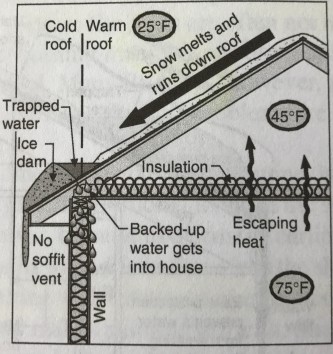That’s not a new Snapchat filter. That’s Thermal Imaging with a professional FLIR Infrared camera. There are many different uses for an infrared camera like this. It allows the user to capture differences in temperature, the dark purple is cold and the bright yellow is hot. When choosing a Home Inspector make sure to choose one that uses this technology. Many areas of the home are inaccessible to the eye and without thermal imaging a lot of issues can go un checked.
This tool can help to identify air intrusion and extrusion, moisture intrusion, plumbing leaks, roof leaks, insulation gaps, overloaded electric circuits, HVAC leaks, and much more. A quick scan with the thermal camera is a great addition to any Home Inspection.
Some people seem to think that a thermal camera can “see” through the wall or through clothing. This is NOT true. The camera captures radiation from whatever it is looking at. For example, thats me in the picture at the top. It was a cold day and I took my jacket off and all the heat radiated off my body and was captured by the camera, but you can’t see through my shirt.
Above you can see a missing section of insulation in the wall and heat is escaping. This day was very cold and the heat loss really popped off the camera screen.

From the inside of another house. To get the best thermal images I turn the heat way up to get a better Delta T (Difference in Temperature). Windows lose a lot of heat, but those cold spots creeping up the wall from the ground are moisture. This is called “Rising Damp”. Moisture rises up the siding and causes damage and possibly mold.
Lastly is a heat lamp in an attic directly above a bathroom. There is so much heat it looks like it is on fire! There is zero insulation around the lamp which is leaking very warm air into the cold attic. Warm air + Cold Air = Moisture. Not good for an attic without proper ventilation.
These are just a few of the things I have seen using Thermal Imaging. I use the thermal camera on every home inspection because it allows me to see things that I could never have seen with my naked eyes.
Energy Efficiency is a breeze with a thermal camera. You can hunt for heat loss and gaps in heat supply piping. A quick scan of a home on very cold or very warm day can narrow down areas where small improvements can make a big difference on the heating and electric bill.
If you have questions about thermal imaging just contact us and we will be glad to help.



